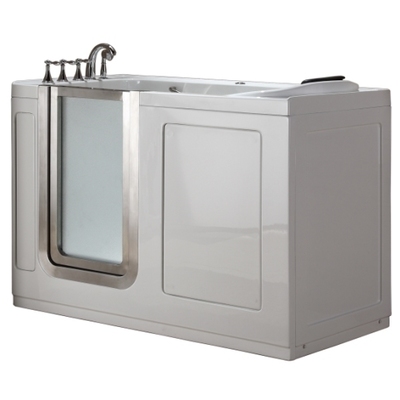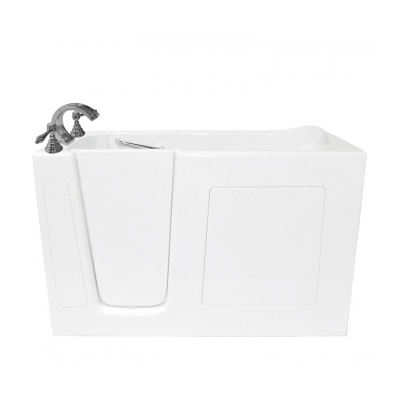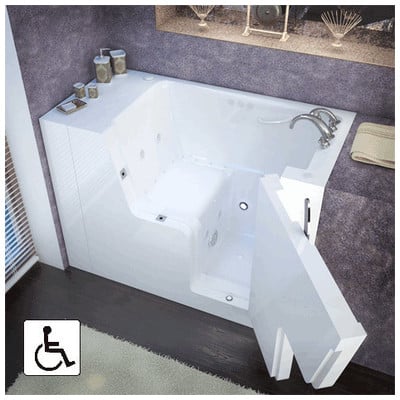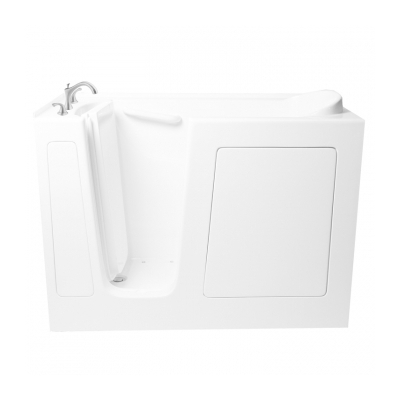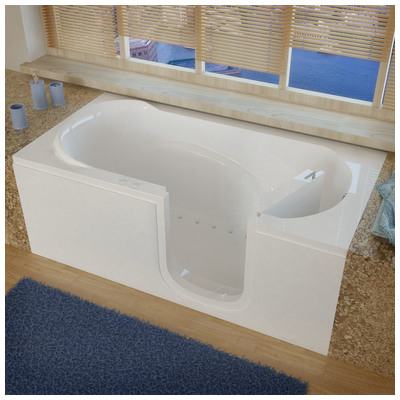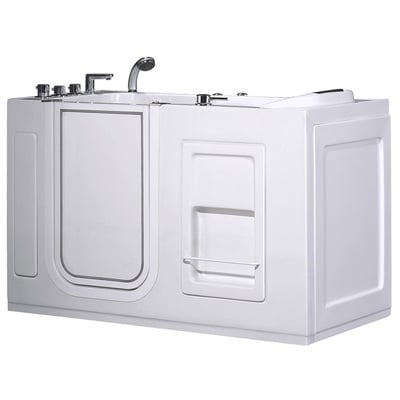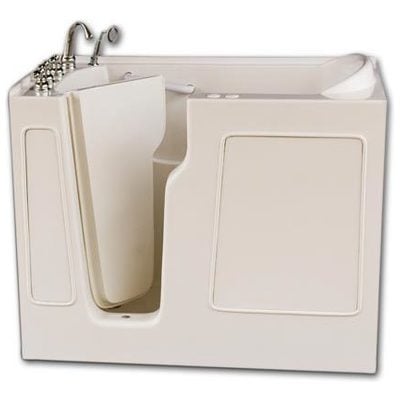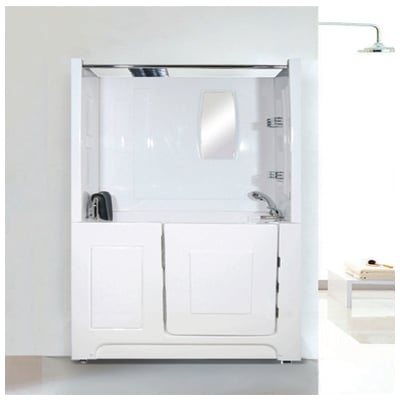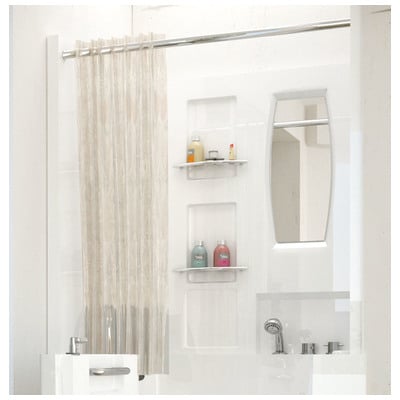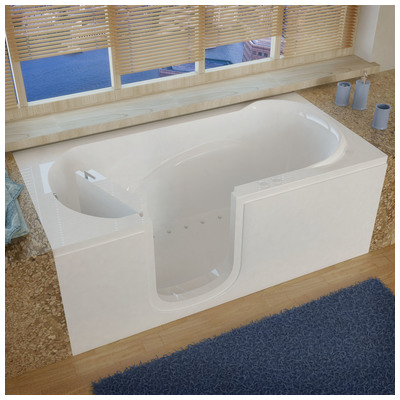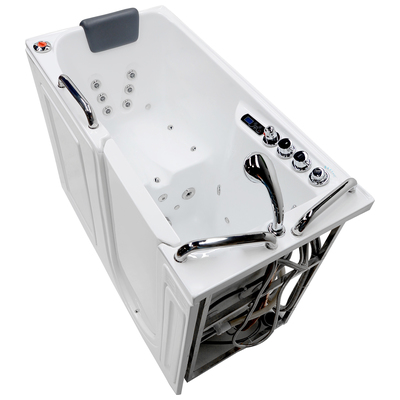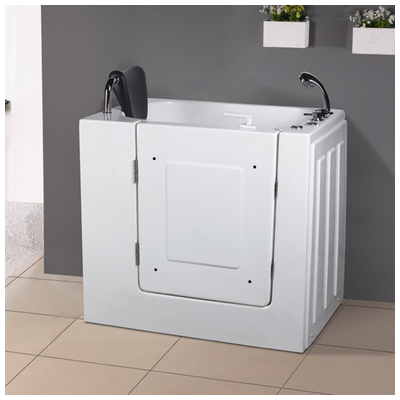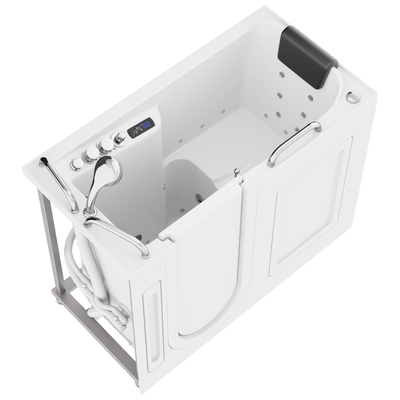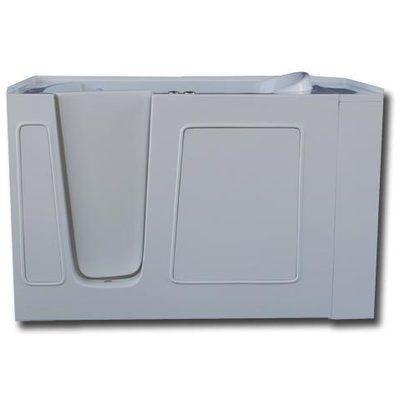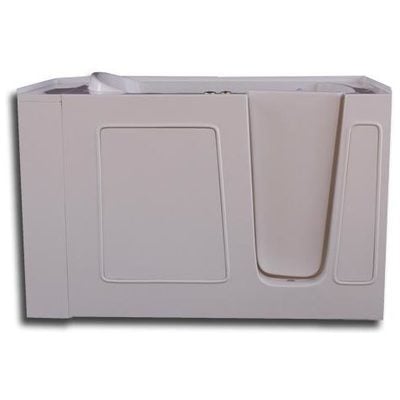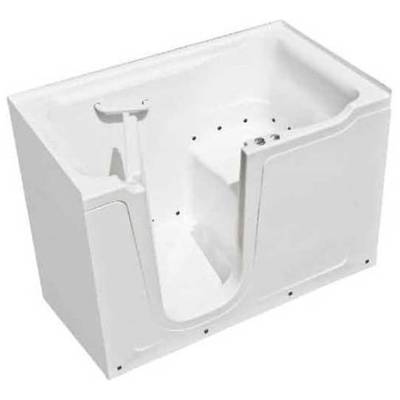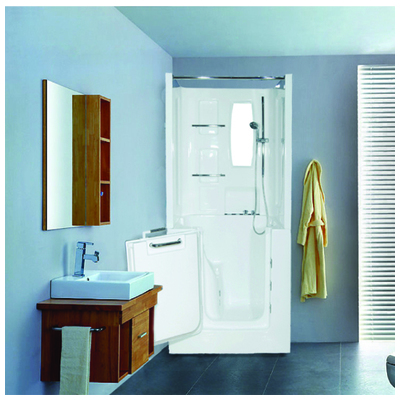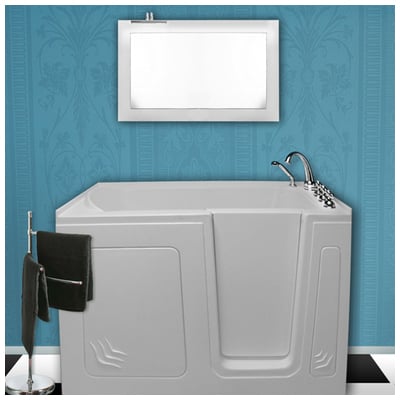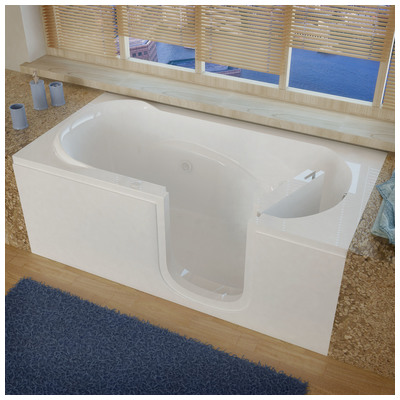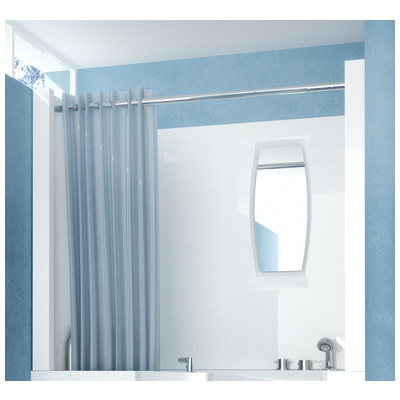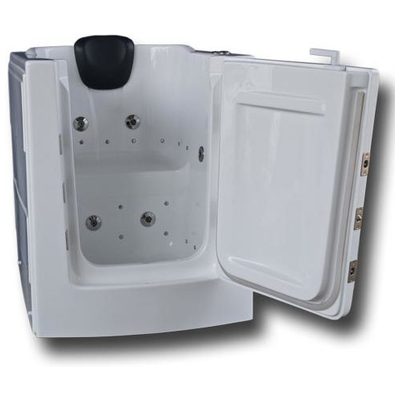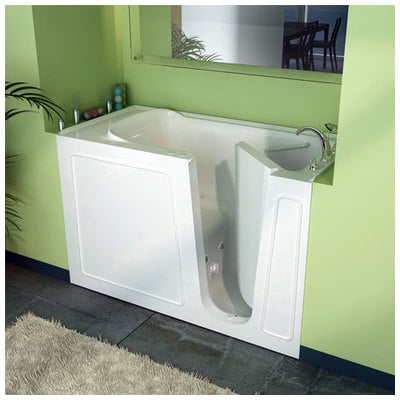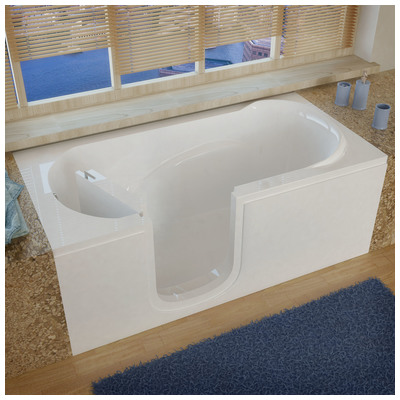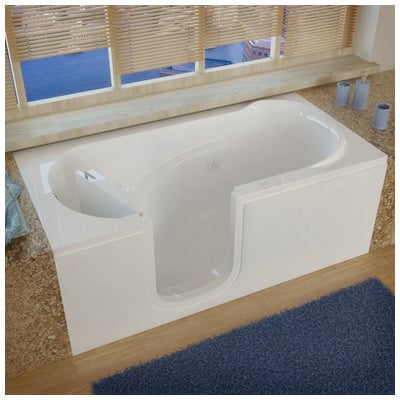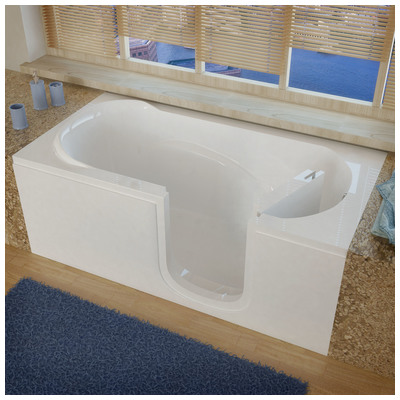Major bathroom remodels are among the most popular (and most important) upgrades you can make to your home. But not all bathroom renovation is necessarily for style; for many, bathroom renovations add much needed accessibility. Especially as you age or for those with physical limitations, the right bathroom upgrades and alterations can increase independence and even make it possible to remain in your own home or live alone despite limited mobility. A walk-in tub is among the most important of these upgrades, as they provide both accessibility and, often, a variety of hydrotherapy options. But how do they work, and what should you know before you buy?
What Is A Walk In Tub?
Walk in tubs are just what they sound like – bathtubs with a front apron that opens up either at floor level or within an inch or two of floor level, allowing users to “walk” (or, really, step) into the tub without having to climb over a 15-20 inch tall apron. For wheelchair users or really anyone who would have difficulty with a steep step onto a slippery surface, this simple change can be the difference between needing assistance and being able to bathe yourself. Almost all walk in tubs, including this 3060 Walk In from Meditub, have built in seats for a comfortable sitting shower, as well as grab bars, no-slip surfaces, and often a variety of hydrotherapy options.
How Big Should Your Walk In Tub Be?
Many walk in tubs, like this 3140 Shower Enclosure, are designed to accommodate sit-down showers. If this is the only application you need for your walk in tub, you can often get a much more compact model. If you also want to be able to shower standing up, look for a longer tub in the 60 inch or more range. You want a seat that’s large enough to be comfortable, but also enough floor space (length and width) that you can stand comfortably and unimpaired. As well, you want to be aware of the interior dimensions of the tub as well as the exterior ones. Especially for those with a larger frame, you want to be certain you can sit comfortably with room to enjoy the water.
No Slip Surfaces
Many walk in tubs, like this 3054 No Slip, are covered wholly or in part by non-slip surfaces to prevent falling. Now, no-slip floor surfaces are an absolute must for anyone wanting to use their walk in tub as both a sitting and standing shower. But users often report that no-slip seating makes it difficult to sink into the tub and get comfortable. Obviously, this has to be a personal choice based on your own strength and stability, but (for reasons I’ll mention in a moment), it’s important to note that slip-free seating can make a walk in tub less comfortable to use.
An Important Note About Soaking
Many manufacturers picture people soaking up to their shoulders in walk-in tubs, but in many cases this is quite misleading. Walk in tubs are very deep, but because you’ll typically be seated while in one, the “depth” of the tub in practice is much less significant. In fact, with some models you’ll find that the water only comes up to the small of your back while seated straight up. To get a good sense of how high the tub will actually fill, you’ll need to measure the distance between the top of the seat and the overflow drain, or subtract the height of the seat from the height of the overflow drain. This number will give you a more accurate reflection of how much water you’ll have for soaking. Also, if you’re interested in soaking as well as showering, look for wheelchair accessible tubs like this one from Venzi that have lower or longer seats or sloped backs, which make it a little easier to sink down into the tub, though again you want to consider this alongside your personal mobility.
Know Your Hydrotherapy Options
Hydrotherapy – from light effervescent bubble massages to full powered water jets – can be incredibly helpful in relieving tension and soothing aching muscles or even arthritis pain. But there are a few things to think about when considering your options. First, you should be aware that – because of the overflow valve – most massagers will only reach your lower back without a little maneuvering. That said, many tubs – like this WT623 – have jets for your legs, feet, and on the bottom and sides of the seat as well to get a more all-encompassing feeling. The type of whirlpool you want depends on your personal preferences and the type of massage you enjoy, but there are a few features to look out for. Built-in in-line heating can help maintain a comfortable water temperature for the duration of your bath, and tubs with built in self-cleaning or water purge options can help cut down on cleaning difficulty and the need for regular (often labor-intensive) maintenance.
What’s The Actual Water Capacity?
This one is incredibly important, because the listed capacity and capacity to overflow (which is what you’ll probably be doing) can be quite different. If the actual capacity is higher than the size of your water heater, you may have to invest in a larger one to fill your tub all the way up with hot water – a hefty added expense, especially if you didn’t anticipate it. In-line heating can help reheat lukewarm water to a certain extent, but remember that you’ll have to be in the tub from the moment you turn it on until it fully finishes draining, which can take several minutes on both ends for such a high capacity tub. A smaller tub like this 2739 shouldn’t present a problem, but larger lounging tubs or ones used as a standing shower as well as a sitting one may require a higher capacity water heater.
Pay Attention To The Type Of Door
One of the most important things to remember about a walk in tub might seem obvious but is also easy to overlook for those accustomed to traditional bathtubs: once the tub is filled, you can’t open the door until it’s been drained completely, which can take some time as walk in tubs are typically very deep and have a high capacity. There are two main types of doors on walk-in tubs, those that swing inward and those that swing outward. Ones that swing inward seal incredibly tightly because water pressure seals them shut, which provides the highest guard against leaking, while ones that swing outward have to have additional measures to ensure the door stays water tight. But inward-swinging doors CANNOT be opened while the tub is full of water for the same reason, so if emergency access is a major consideration, you might want to look for walk in tubs with outward swinging doors like this 2747 Shower Enclosure, or the less common slide-away doors.
Pay Attention To The Size And Shape Of the Opening
Walk in tubs come in a variety of shapes and sizes, and so do the doors that seal them. Depending on your own size and mobility levels, you definitely want to pay attention to those dimensions. Specifically, how far up off the floor is the door? Is your walk in tub a true walk in or actually a step-in? Also make note of the shape of the opening itself and where it is in relation to the seat of the tub. This Walk In Whirlpool, for example, has a wide outward swinging door, but requires a more substantial step up to get inside. You want to be certain that you can easily and independently maneuver yourself into and out of the tub, so make sure the door is wide enough for you to pass through it comfortably and sit easily.
What concerns do you have about buying a walk-in tub? Anything you’re curious about that I haven’t mentioned here? Let me know in the comments!




